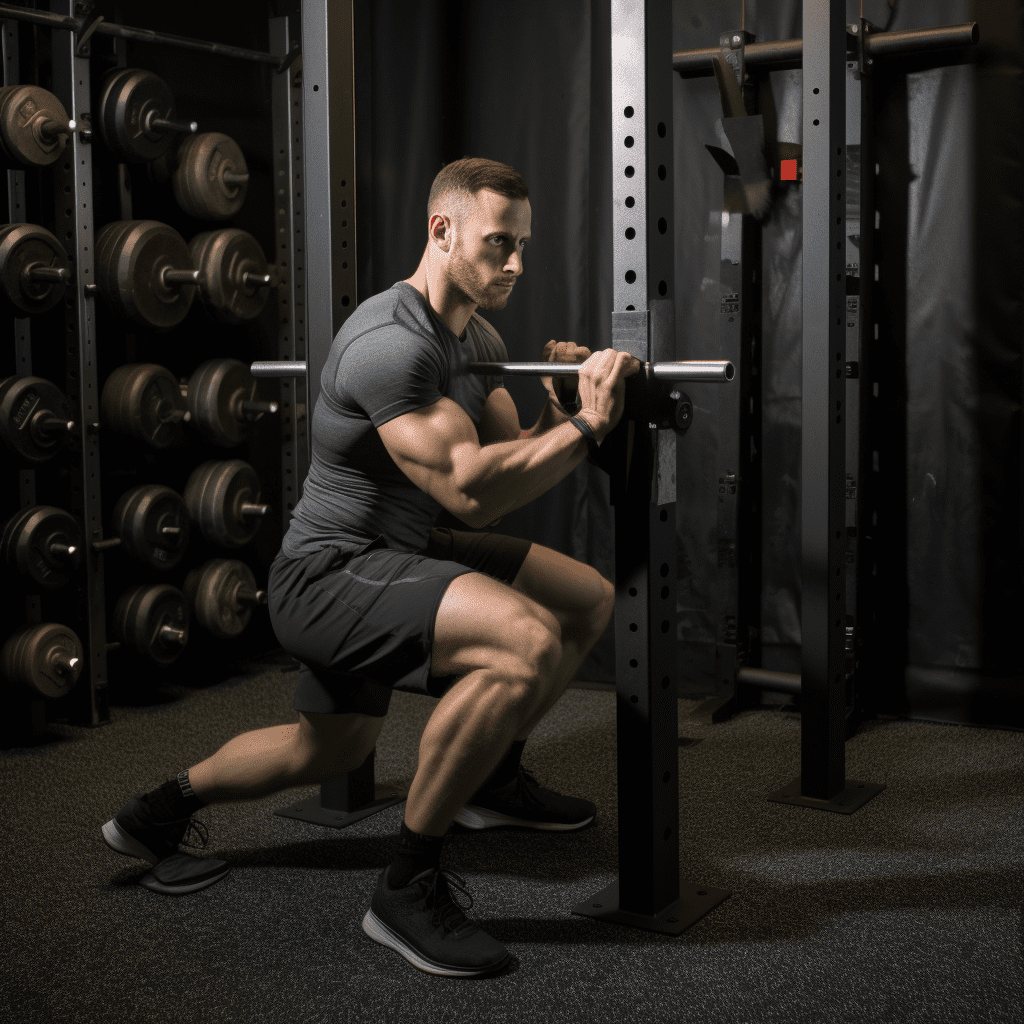
How to Do a Box Squat: A Comprehensive Guide
Squats are an essential exercise for building lower body strength and developing powerful leg muscles. One variation of the squat that provides unique benefits is the box squat. In this article, we will guide you through the proper form and technique for performing a box squat. Whether you’re a beginner or an experienced lifter, incorporating box squats into your routine can help enhance your strength and performance.
Understanding the Box Squat
The box squat is a squat variation that involves sitting back onto a box or bench before standing back up. This exercise focuses on the posterior chain and helps in developing explosive power, improving squat depth, and enhancing overall squatting mechanics. It also offers an excellent option for individuals with limited mobility or those recovering from lower body injuries.
Setting up for a Box Squat
Before starting your box squat, you need to ensure that you have the right setup. Follow these steps to set up for a successful box squat:
- Choose the Right Box: Select a box or a bench that allows you to reach parallel or slightly below parallel when sitting down. This will help maintain proper squat depth and engage the target muscles effectively.
Position Your Feet: Stand with your feet hip-width apart, with toes pointing slightly outward. This stance provides a stable base for your squat and allows for proper alignment of the knees and hips.
Brace Your Core: Engage your core by drawing your belly button in towards your spine. This will help stabilize your spine and protect it during the movement.
Executing the Box Squat
Now that you’re set up, it’s time to perform the box squat. Follow these steps to execute the exercise with proper form:
- Initiate the Squat: Begin by pushing your hips back and sitting down onto the box. Maintain a controlled descent, ensuring that your weight is evenly distributed on your feet.
Maintain Proper Posture: Keep your chest up and maintain a neutral spine throughout the movement. Avoid rounding your back or leaning too far forward, as this can put undue stress on your lower back.
Pause and Engage: Once you reach the box, pause briefly while keeping tension in your muscles. This helps to develop strength and stability at the bottom of the squat.
Drive Through Your Heels: To stand back up, push through your heels, and drive your hips forward. Focus on using your glutes, hamstrings, and quadriceps to power the movement.
Complete the Repetition: Fully extend your hips at the top of the movement, ensuring your knees are straight. Maintain control as you lower yourself back onto the box for the next repetition.
Common Mistakes to Avoid
While performing a box squat, it’s important to be mindful of common mistakes that can compromise your form and safety. Here are some common errors and how to avoid them:
- Rounding the Back: Maintain a neutral spine throughout the movement. Avoid rounding your back, as this can lead to spinal injuries.
Lack of Bracing: Engage your core and brace your abdominal muscles before initiating the squat. This helps to protect your spine and maintain stability.
Not Reaching Full Range of Motion: Ensure that you reach parallel or slightly below parallel when sitting on the box. This allows for optimal muscle engagement and range of motion.
Shifting Weight onto Toes: Keep your weight evenly distributed on your feet, with a slight emphasis on your heels. This ensures proper balance and prevents excessive strain on your knees.
FAQ
Q: Is the box squat suitable for beginners?
A: Yes, the box squat can be an excellent option for beginners. It helps to develop proper squat mechanics, builds strength gradually, and offers a controlled range of motion.
Q: How do I progress with box squats?
A: Once you have mastered the basic box squat, you can progress by adding weight using a barbell, increasing the box’s height, or incorporating advanced variations like box jumps.
Q: Can box squats be beneficial for individuals with knee and hip issues?
A: Yes, box squats can be beneficial for individuals with knee and hip issues. The controlled range of motion and the reduced stress on the joints make it a safer option compared to traditional squats.
Q: How many reps and sets should I do for box squats?
A: The number of reps and sets for box squats depends on your fitness goals and training program. Generally, 3-5 sets of 6-12 reps are commonly recommended for strength and hypertrophy.
Q: Can I do box squats without a box or bench?
A: While it’s recommended to use a box or bench for box squats, you can modify the exercise using sturdy platforms or elevated surfaces that allow you to maintain proper squat depth.
By incorporating box squats into your workout routine, you can enhance your lower body strength, improve squat mechanics, and take your fitness to the next level. Remember to start with proper form, progress gradually, and always listen to your body to prevent injuries. Happy squatting!


